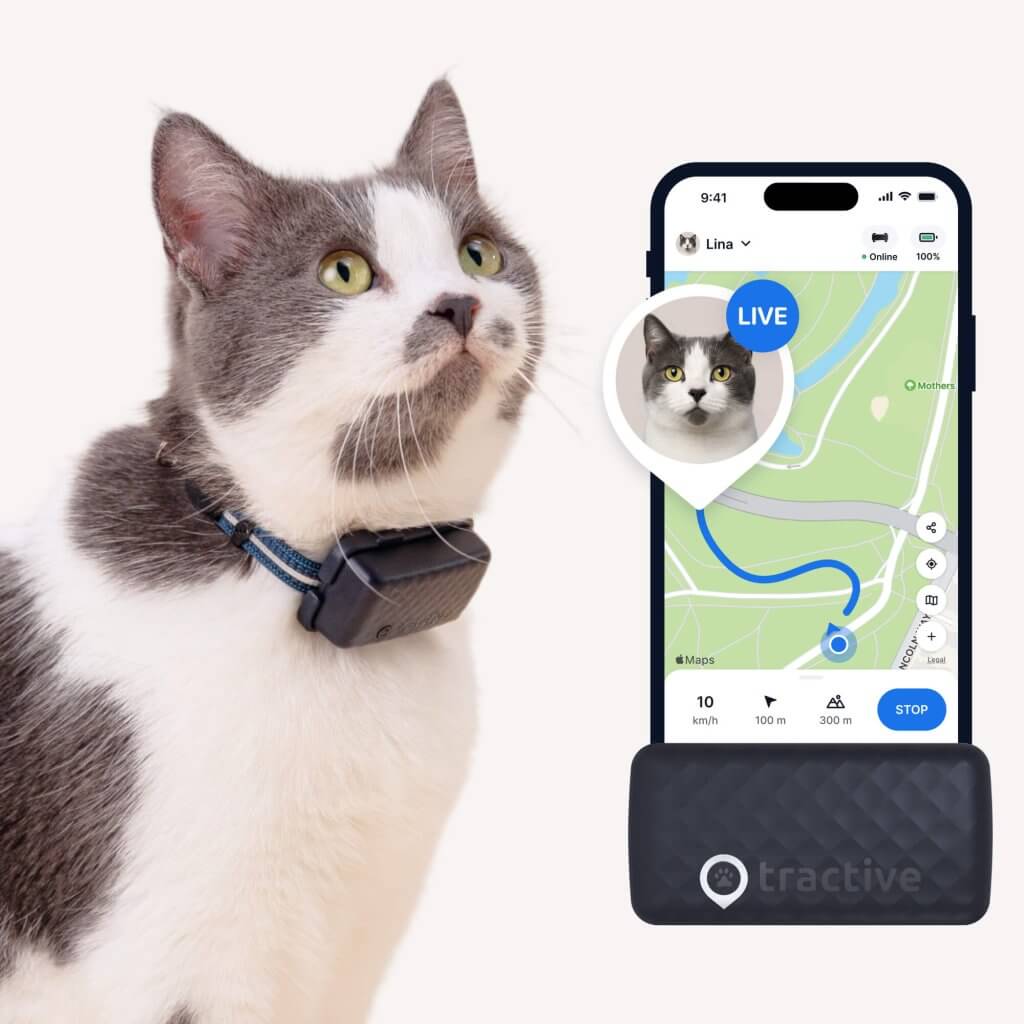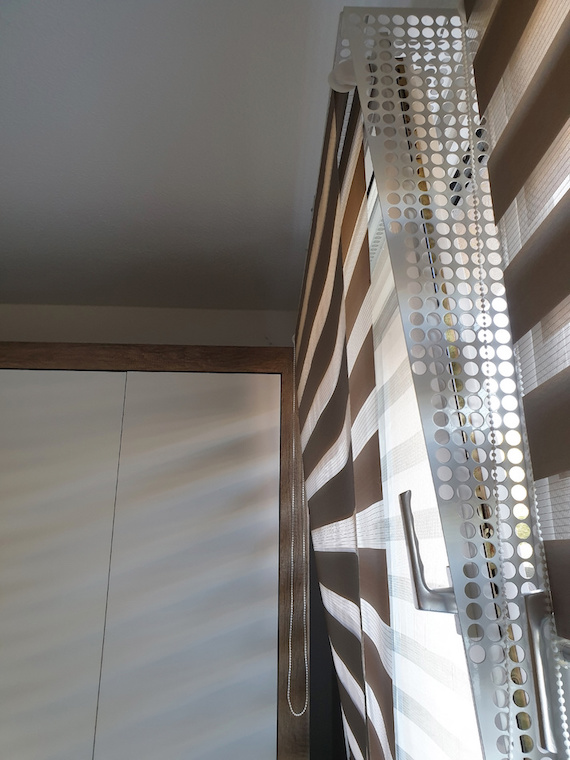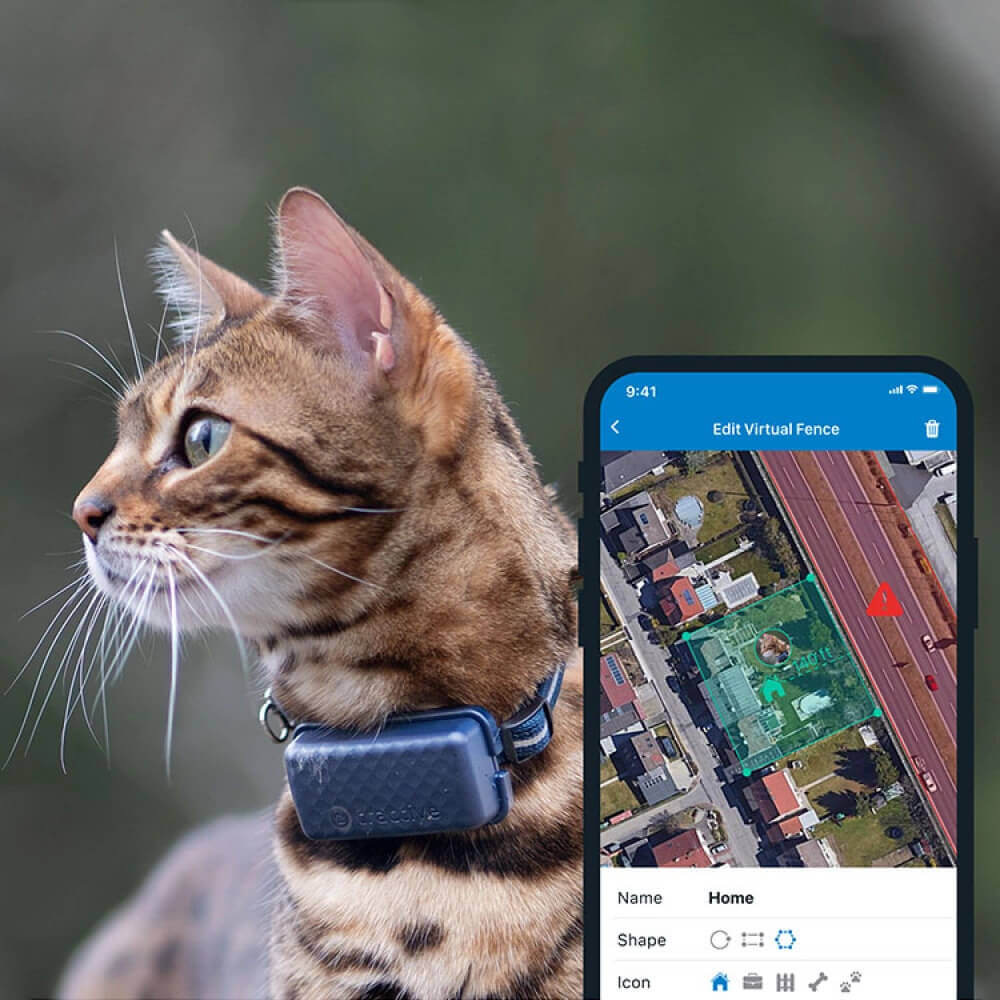High Rise Syndrome in Cats: Keep Yours Safe From Falls
Open windows can be a huge safety risk for cats, especially if you live higher than the first floor. Here's why.
Cats have a reputation for landing on their feet, but that doesn’t mean they’re immune to injuries from high falls. In fact, there’s a name for this phenomenon – high-rise syndrome – which refers to injuries cats sustain from falling out of windows, balconies, or other elevated places. While it might seem like something out of an old cartoon, it’s a real and serious issue for cat parents living in multi-story homes or apartments. So, let’s dive into why and when yours might be most likely to sneak out of an open window and what safety measures you can put in place. (Including where a Virtual Fence can come handy.)
Key Takeaways
High-rise syndrome is a real danger
Despite their agility, cats can sustain serious injuries from falling out of high places like windows or balconies. These injuries can include fractures, skin injuries, and contusions.
Causes and at-risk cats
These falls are often caused by a cat’s curiosity, hunting instincts, or being startled. Young, old, overweight, or indoor-only cats are at a higher risk.
You can prevent your cat from falling
Use protective window screens, never leaving windows tilted, and provide safe indoor perches for your cat. If a cat does fall, seek immediate veterinary care.
A smart cat collar with real-time GPS tracking can prevent an emergency
From your Tractive app, you can set up a virtual “safe zone” around your home. Now, you’ll receive instant escape alerts on your phone if your cat leaves it, allowing you to bring them back inside before an accident can happen.

Find out where your cat spends their time.
Read more- Key Takeaways
- What is high rise syndrome in cats?
- What might cause my cat to fall out a window ?
- Are some cats more at risk for a fall than others?
- What to do if your cat falls out a window or gets stuck in one
- How you can prevent high rise syndrome in cats
- Where a smart cat collar can help prevent a fall
What is high rise syndrome in cats?
High-rise syndrome is a term used by vets to describe injuries that occur when a cat falls from a significant height — typically from a window, balcony, or rooftop. And no, sadly, cats don’t always land on their feet unharmed. While they have an impressive righting reflex that helps them twist mid-air, falls from high places can still result in serious injuries. Including:
- Fractures
Especially if they land in a weird position. Or try to wriggle free from a tilted window they got stuck in. These include fractures to the legs, tail, or spine — or even broken ribs. - Skin injuries
From abrasions or any open wounds from trying to free themselves or if they land somewhere dangerous. These can also get infected, leading to worse health problems down the line. - Contusions
Which can lead to nerve “pinching”, pain, organ damage, and even permanent dysfunction.
Not only does high rise syndrome in cats mean a hefty ER bill, it’s also a traumatic experience for your cat. So you’re best off preventing a fall in the first place. We’ll cover how you can do this with a smart cat collar and a Virtual Fence a little further below.

Track your cat wherever they go
Get real-time location information, wherever they go. Find out when they go somewhere they shouldn’t, with Virtual Fences. And discover their favorite spots with Territory.
What might cause my cat to fall out a window?
You might’ve opened the window for a bit to air out the apartment — and that might just be enough temptation for your curious feline. Even though cats are excellent climbers and agile jumpers, they sometimes misjudge distances or get startled, leading to accidental falls. Here are a few reasons why cats end up in risky situations near open windows or balconies:
- Startled reactions
Loud noises or sudden movements can cause a cat to lose balance and fall. - Chasing prey
A bird or insect flying outside can trigger your cat’s hunting instincts, making them leap toward the action. - Curiosity
Cats love exploring new spaces, and an open window or balcony is an irresistible opportunity. - Heat and fresh air
On warm days, cats might sit by the window to catch a breeze and accidentally slip.
Even worse, if your house has tilted windows, it could lead your poor cat to get stuck. Typically, cats rescued from a tilted window end up with numb hind legs. (Because of their blood vessels getting “trapped” by the weird position.)
Are some cats more at risk for a fall than others?
While any cat can potentially sneak out or get stuck in a window, be extra careful if yours is:
- On the younger side
So most likely naturally more curious and energetic. Also more likely to climb or jump onto risky surfaces…and not have the instincts to protect themselves. - An indoor cat with limited outdoor experience
Indoor cats might not often encounter heights outside. So they may lack the awareness and caution needed to judge distances correctly. - Not spayed or neutered yet
Intact cats may be more prone to wandering, especially during mating season. Which can increase their risk of sneaking out and falling. - On the older side
Senior cats may have poorer vision, arthritis, or reduced agility. So they may struggle with balance and coordination, making falls more likely. - On the heavier side
Heavier cats may not have the same agility as their leaner counterparts. So it may be harder for them to correct their position mid-fall or wriggle free of a tilted window.
What to do if your cat falls out a window or gets stuck in one
Even with precautions, accidents can happen. If your cat falls from a high place:
- Protect yourself first
If your cat is stuck in, say, a tilted window, they might scratch you out of panic. Keep a thick pair of gloves and jacket handy to protect yourself. - Get your cat out safely
In case they’re stuck somewhere, reach under your cat with one hand to pull them out gently. Hold them firmly from above with the other. (So that they don’t injure themselves even more in the panic.) Talk to yours in a calm voice and praise it while you free it to calm it down a little. - Check for injuries
Even if your cat seems fine, internal injuries can be serious. (And not visible to the naked eye.) Try to move your cat as little as possible and take them straight to the vet for a checkup. - Monitor your cat’s behavior
Watch for signs of pain, difficulty walking, or breathing issues in the hours and days after a fall. Some common symptoms of high rise syndrome in cats include panting, a low body temperature, bleeding from the mouth, broken teeth, or any swelling around the body.
“While 90% of cats will survive falling from a high-rise building, about a third of those cats won’t survive without veterinary help.”
– Pet MD1
Once you’re at your vet’s, they might give your cat an infusion to stabilize their blood circulation. They might also prescribe anti-inflammatory o pain-relieving medication and some examinations, including X-rays and ultrasounds. In more severe cases, surgery or physiotherapy may be necessary.
In veterinary practice, getting stuck or falling out a window it is usually classified as an emergency. But on the bright side, many cats in this situation recover fully if you catch on to it early.
How you can prevent high rise syndrome in cats
- Never leave your windows tilted when your cat is unattended
Rather, leave them open (tilted) only when you’re at home to intervene. When you’re not around and your cat is at home alone, it’s better to keep them closed. - Ventilate more frequently throughout the day
Rather than simply keeping your windows ajar. Be mindful of keeping them closed at nighttime when your cat might be more likely to be awake. - Attach protective screens to your windows
Like, for example, as pictured here. You can either screw or glue these grills to the window or wall. (Don’t worry, you can still open the window fully.) Else, mesh or sturdy window screens can withstand your cat’s weight if pushed against.

- Never let your cat out on to a balcony unsupervised
Check out our tips on how to cat-proof a balcony for max safety. - Give your cat an indoor perch
Cat trees, window perches, and shelves can help your cat enjoy their love for high spaces without the danger. - Use a cat ladder
In case you live on a first floor and want to provide your cat safe access to the outdoors, a cat ladder can help them scamper downstairs without needing to jump. - Install a catio
A catio is an outdoor cat enclosure to allow your cat some safe outdoor access, without the exposure.
Where a smart cat collar can help prevent a fall
Even with your best efforts, your cat might still sneak out an open window – and end up miscalculating the height or how “wriggly” the opening is. So if you live near an unsafe, busy street or higher than the second floor, a smart cat collar with real-time GPS tracking can help you prevent an escape in the first place.
Just strap your trusty Tractive device to your cat’s collar, head to the mobile app, and set up a “safe zone” around your home. Now if your cat sneaks out, you’ll receive an instant alert on your phone, giving you a chance to bring them back inside before anything happens.

“We’ve set a safe zone around our apartment, so we get notified when she returns. When she climbs back up the cat ladder to our balcony, we know she’s home and can let her in – super practical, especially in winter!”
– Carola M, mom to Tilda the cat
Read more: How Tilda Graduated To An Outdoor Cat – With Tractive
And if you’ve liked this post, share it with a friend or a loved one – and let’s help build a safer, kinder world for our furry friends together.



